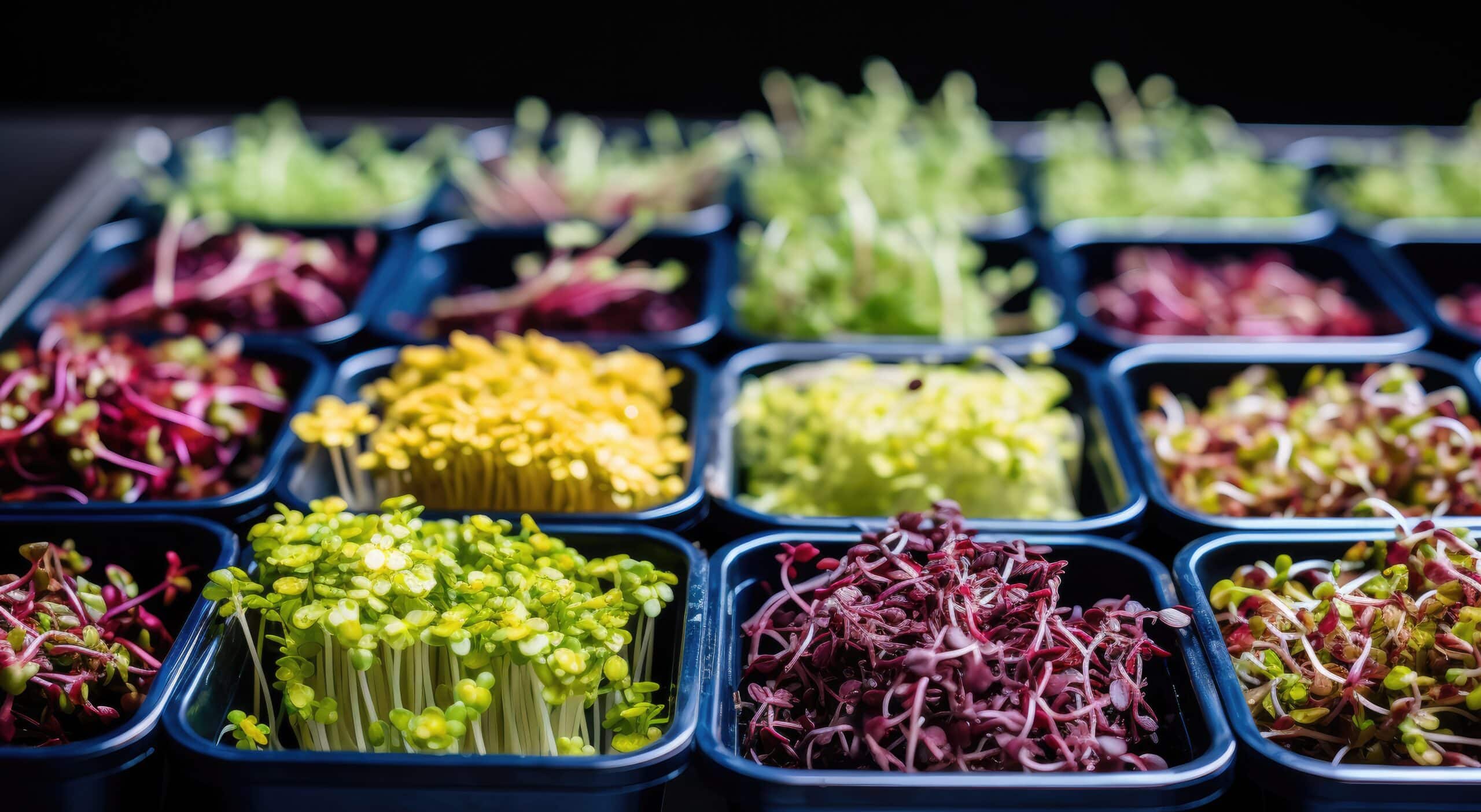Is it Better to Grow Microgreens in Water or Soil?
Key Takeaways
- Precise control over nutrient balance
- Faster growth rates
- Cleaner and more uniform appearance
Microgreens, the young and tender seedlings of vegetables and herbs, have gained popularity in recent years due to their high nutritional value and culinary versatility. When it comes to growing microgreens, there are two main methods: in soil or in water (hydroponically). Both methods have their advantages and disadvantages, and choosing the right one depends on various factors such as personal preference, space availability, and desired outcomes.
Advantages of Growing Microgreens in Water (Hydroponically)
There are several compelling advantages to growing microgreens in water:
- Precise control over nutrient balance: One of the key benefits of hydroponic systems is the ability to have precise control over the nutrient solution. With hydroponics, you can tailor the nutrient solution to provide the exact minerals your microgreens need, resulting in efficient and accelerated growth. This allows for optimal nutrient uptake and can lead to healthier and more vibrant microgreens.
- Faster growth rates: Hydroponically grown microgreens can grow up to 50% faster compared to those grown in soil. This is mainly due to the direct and constant access to nutrients provided by the nutrient solution. Microgreens grown in water can take advantage of the nutrients immediately, resulting in quicker growth and a shorter time to harvest.
- Cleaner and more uniform appearance: Hydroponic microgreens often have a cleaner and more uniform look compared to those grown in soil. Since they are not exposed to soil, there is less chance of soil particles sticking to the leaves. This can be particularly desirable in culinary situations where visual appeal is important.
- Reduced risk of pests and diseases: Without soil, hydroponic microgreens are less susceptible to soil-borne pests and diseases. Soil can harbor various pathogens and pests that can harm the plants, leading to crop failure. By growing microgreens in water, the risk of pests and diseases is significantly reduced, potentially reducing the need for pesticides or other interventions.
- Water conservation: Hydroponic systems are known for their water efficiency. Unlike traditional soil-based methods, hydroponics recirculates the water and nutrients, leading to less water waste. This can be especially important in regions with limited water resources or for individuals looking to minimize their environmental impact.
- Space efficiency: Another advantage of growing microgreens hydroponically is that it often requires less space compared to soil-based methods. Hydroponic systems can be designed vertically or in compact setups, making them ideal for urban settings or small indoor areas where space is limited.
Advantages of Growing Microgreens in Soil
While growing microgreens in water has its benefits, there are also advantages to choosing soil as the growing medium:
- Natural growth environment: Microgreens grown in soil provide a more natural growth environment as they have access to the wide array of nutrients and microorganisms present in the soil. Some proponents argue that this can result in microgreens with superior flavor profiles and nutritional content.
- Lower upfront costs: Soil-based growing methods generally require less initial investment compared to hydroponics. With soil, you don’t need to invest in complex systems or equipment such as pumps, timers, and grow lights. This can make soil-based growing more accessible to beginners or those on a tight budget.
- Ease of setup: Growing microgreens in soil is often simpler and requires less technical knowledge compared to hydroponics. It can be as straightforward as preparing the soil, sowing the seeds, and providing adequate light and moisture. This ease of setup can be appealing to individuals who prefer a more hands-on approach or who enjoy the process of gardening.
- Nutrient-rich soil: While hydroponic systems offer precise control over nutrient balance, soil naturally contains a diverse range of nutrients and minerals. Microgreens grown in nutrient-rich soil may have a more complex and diverse nutritional profile compared to those grown hydroponically.
- Environmental sustainability: Soil-based growing methods can be considered more environmentally sustainable in certain contexts. They do not require the use of electricity for pumps or artificial lighting, which reduces energy consumption. Additionally, soil-based systems can be integrated into regenerative agriculture practices that promote soil health and biodiversity.
Conclusion
Choosing whether to grow microgreens in water or soil depends on factors such as personal preference, available resources, and desired outcomes. Hydroponic systems offer advantages such as precise control over nutrient balance, faster growth rates, and reduced risk of pests and diseases. On the other hand, soil-based methods provide a more natural growth environment, lower upfront costs, and nutrient-rich soil.
Ultimately, there is no definitive answer as to which method is better for growing microgreens. It is important to weigh the advantages and disadvantages of each approach and choose the one that aligns with your goals and circumstances.
Related Websites:
FAQs:
Q: What are microgreens?
Microgreens are young vegetable greens that are harvested after the seedling stage but before reaching maturity. They are packed with nutrients and come in various types.
Q: What are the benefits of growing microgreens in water?
Growing microgreens in water, using the hydroponic method, offers benefits such as faster growth, reduced risk of pests and diseases, and better control over nutrient availability.
Q: What are the advantages of growing microgreens in soil?
Growing microgreens in soil provides enhanced flavor and the potential for increased nutrient content. However, it may require more attention to quality soil and watering techniques.
Q: What factors should I consider when deciding between water and soil cultivation?
When choosing between water and soil cultivation for microgreens, consider factors like ease of setup, maintenance requirements, cost, flavor, nutrition, and yield. Each method has its own advantages and disadvantages.
Q: How do I choose the ideal method for growing microgreens?
Choosing the ideal method for growing microgreens depends on individual preferences and needs. Consider factors like personal taste preferences, nutritional goals, available resources, space availability, time commitment, and desired quantity of microgreens.






